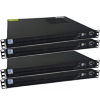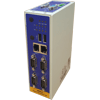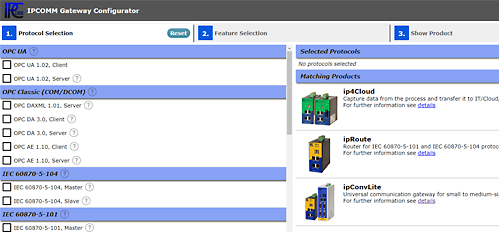Sinaut ST1
ISO/OSI Model
| 7 | Application Layer | Sinaut ST1 Application Layer |
| 6 | Presentation Layer | n/a |
| 5 | Session Layer | n/a |
| 4 | Transport Layer | n/a |
| 3 | Network Layer | n/a |
| 2 | Link Layer | DIN 19244, FT 1.2 |
| 1 | Physical Layer | RS232 / V.24 (UART-Conform) |
Supported Information Types
Control Direction
- Single Command
Monitoring Direction
- Single indication [1 Bit]
- Single indication [1 Bit] with time tag
- Double indication [2 bit]
- Double indication [2 bit] with time tag
- Measured value [12 bit]
- Counter value [28 bit]
Protocol Features
Physical Layer
RS232 / V.24 (UART-Conform), Half-Duplex
Link Layer
Framing of data according to DIN 19244, FT 1.2
Application Layer
Transmission of pulse commands
Spontaneous, priority controlled transmission of Indications and Measurands with or without time tag
Absolute time tag representation, accuracy 1 ms
each measurand additionally contains an error bit and an overflow bit
General Interrogation
Request of specific Indications, Measurands or Counters is possible
Transmission of organizational data
up to 255 RTUs on 1 serial lineAddress Space
Station Address: 0..254
Telegram Number: 0..255
Available Protocol Stacks
Applicable Products
References





